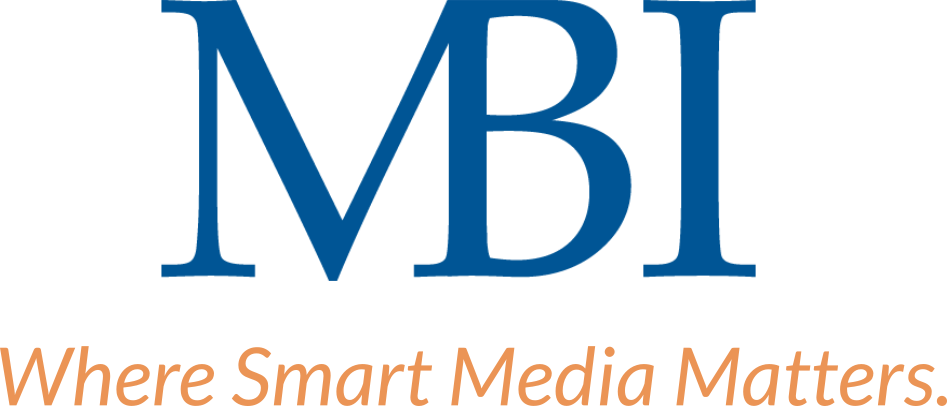Billboards. Aerials. Street furniture. Transit signage. Planes, trains and automobiles. With limitless opportunities to explore out of home (OOH), the medium may be daunting for some advertisers. Successfully navigating these unique, creative formats allows advertisers to grab the attention of their audiences “on the go.” When properly executed in a Smart Media strategy, OOH can have a tremendous impact and alter the ways consumers engage with your brand.
If you are an advertiser interested in investing your media dollars into an exciting, highly creative OOH campaign, here are 8 OOH benefits to consider:
1. Always Top-of-Mind
No matter when, where and how audiences consume their media, OOH can reach nearly everyone. Unlike other formats competing for attention, OOH is almost unavoidable. People spend a weekly average of 19.6 hours with outdoor advertising, according to the Out of Home Advertising Association of America (OAAA).
From bus wraps to posters, OOH creates the “illusion of discovery.” Brand messaging seamlessly becomes integrated into everyday activities and remains at the forefront of consumer’s minds through a number of touch points. A high frequency of placements, combined with memorable creative and clear messaging, can create a positive impact, generate strong recall and resonate with your target audience.
Outdoor advertising is the leading awareness medium today. Even the rise of ad blockers and channel surfing cannot stop this platform from reaching the right audiences.
2. High Favorability for Consumers
Naturally, the majority of consumers enjoy watching, listening and digesting their content without interruption. OOH plays a key role in boosting favorability because it is one of the least intrusive forms of advertising. Facts and figures compiled by the OAAA reveal that print and outdoor advertising are tied at 55% for consumer favorability among U.S. adults, while TV follows at 49% favorability.
So, what do these two forms of media have in common?
- Emphasis on high-quality, visual branding
- Less intrusive compared to other media
3. Rapidly Growing vs Other Media
While certain channels of media are becoming more fragmented — making it harder for marketers to reach the masses — outdoor ads remain coherent. MAGNA confirmed that the OOH growth rate in 2019 was 6.3% compared to other forms of traditional media, of which some had negative growth rates. Considering major events like the Presidential Elections in the fall, ad revenue is expected to skyrocket while the availability of ad space drops. This will have a major impact on the growth of OOH, and other channels, during 2020.
4. A True Offline Influencer
Move aside, Instagram — OOH media is the superior offline platform for influencing consumer behavior. When consumers are in “drive time,” advertisers can easily grasp attention while their minds are wandering and eyes are on the road. This provides an exclusive opportunity for persuasion.
The Nielsen 2019 Out Of Home Study revealed that of the consumers exposed to OOH:
- 66% took action by using a mobile device
- 42% used online search to find the advertiser
- 33% accessed a coupon or discount code
5. Creates an ROI Ripple Effect
Outdoor advertising alone has an average ROI of $5.97, according to a 2019 Benchmarketing report. However, OOH combined with other media is highly successful in boosting ROI across other media — specifically digital search and print.
OOH campaigns boost brand awareness and sales growth, which are driving factors to this ROI ripple effect. For instance, digital search ROI increases after users are directed to visit the brand’s website for more information. Direct response CTA’s on billboards, bus wraps and more encourage users to visit other platforms and increase engagement with branded content.
6. Advanced Attribution Capabilities
Monitoring outdoor attribution has become easier than ever. With 95% of the U.S. population owning a smartphone, the ability to track mobile IDs and location allows advertisers to accurately monitor KPIs including impressions, store visitation rates and even behavior patterns. For example, RaceTrac partnered with MBI’s media strategists to launch an OOH campaign while running an attribution study to monitor performance. The results?
- 244% lift in visitation among those who saw the billboards
- 60% of consumers visited a RaceTrac within two days of initial exposure
- 26% were more likely to visit multiple times within a 7-day window
Many OOH vendors, such as Lamar and Clear Channel, will partner with attribution vendors to provide accurate KPIs that ultimately inform future decisions for brands and media strategists. The use of augmented reality (AR) — and other forms of emerging tech — combined with digital OOH formats is another direct way to effectively measure campaign performance.
7. Offers Creative Customization
Ensure you’ve partnered with an outstanding creative agency because both traditional and digital OOH channels offer countless opportunities to stand out among the competition. Digital outdoor formats specifically provide unparalleled customization and relevance. This provides advertisers with the ability to optimize the ad messaging or creative in real-time based on consumer needs relative to dayparts, weather, proximity and consumer-generated content. If you’re looking for creative inspiration, visit the OAAA’s Creative Best Practices Guidelines.
8. Amplified Exposure When Integrated
Similar to the ROI ripple effect, any OOH + other media leads to powerful amplification across consumer reach and engagement. According to a study by MRI/Simmons, an OOH mixed-media strategy can boost reach on other media by more than 90%. OOH is also proven to drive engagement with digital and video by 100%. An integrated media strategy allows your brand to cover more ground and develop messaging that resonates with the consumer at the right place and time.
By implementing a multi-media channel approach, our campaigns yield higher ROI compared to placing OOH alone. If you’re looking for OOH experts to fully streamline the process and maximize your media budget, then connect with an MBI media strategist!

